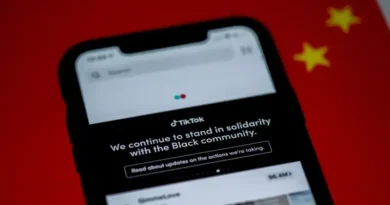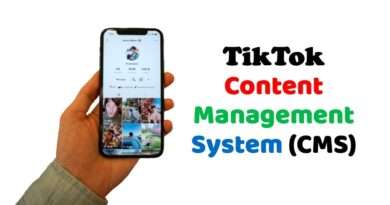What is a Podcast
What is a Podcast? Podcasts are a type of audio or video file that can be downloaded to a computer or mobile device. They can be listened to at any time and are usually downloaded via RSS feeds.
The word “podcast” was coined in 2004 as a portmanteau of “pod” (a small, portable music player) and “broadcast.” However, the first use of the term was in an article by Ben Hammersley in The Guardian on March 11, 2004.
Podcasts are unlike traditional radio shows where one person speaks for hours at a time with little to no breaks. Instead, podcasts are usually composed of individual episodes that can be listened to in any order.
Podcasts are a great way to connect with an audience. They can be a way to educate, inform, and entertain listeners. They can also help people become better educated about certain topics. Podcasts can be used as a marketing tool for brands and businesses.
Podcast Popularity in the USA
Podcasts are a form of media on the rise, but they have been around for some time. Podcasts emerged in the early 2000s but were not popular until Apple introduced iTunes in 2001. With iTunes, podcasts became easier to find and download via RSS feeds.
Podcast listenership has grown steadily, with more people listening to podcasts every year since 2005. An estimated 200 million podcast listeners worldwide, with almost 20% being from the United States alone.
In the United States, 44% of people listen weekly to podcasts. Moreover, about 80% of US adults have listened to a podcast at least once.
Podcasts are typically presented by one or more hosts who may read summaries of new or previously recorded episodes of other podcasts on their show’s website. They may also include advertisements for products or services.
Podcasts may be released on a regular schedule or asynchronously. They are all over the internet, where listeners can subscribe or download audio files and listen to them through a podcast player on their computer, mp3 player, smartphone, or tablet.
A podcast’s host often spends time recording and editing episodes for later release. They may also interview guests and record live sessions from events. Now you can start your own podcast, but before that, it is highly recommended to go through the advantages and disadvantages of podcasts.
Advantages of Podcast
1)- Low Production Cost
Podcasts have lower production costs than traditional radio shows, making them more affordable for advertisers and listeners.
2)- Targeted audience
Podcasts can be more targeted because listeners choose what they want to listen to, unlike traditional radio broadcasts where someone else chooses for them.
3)- Interactive Sessions
Podcasts are interactive, so listeners can call in or text their opinions on-air, and the hosts will read them out loud.
4)- Free Trial Episodes
Most podcasts offer a free trial episode so listeners can try it before buying.
5)- Engaging Content
Podcasts can be used to create engaging content for an audience. They are a great way to tell stories and engage with an audience.
Podcasts are easy to share on social media and have the potential for virality if they are popular enough.
7)- Listen While Commuting
Podcasts offer many advantages for those looking for more educational content and those who want to listen to informative podcasts while commuting.
8)- Stay up to date
In the workplace, podcasts can be used as a way for employees to stay up-to-date on trends in their industry without having to dedicate time outside of work hours.
Disadvantages of Podcasting
1)- Limited device
Podcasts won’t play on all devices without a plug-in for the show. Podcasts are only loud enough to be heard when listened to on a digital device like a smartphone or laptop, which means there’s less of a sound experience in comparison to traditional radio. Also, some people are turned off by listening to someone talking directly into their ear.
2)- Time and Effort
Podcasts take time and effort to produce, so large budgets and staff are necessary to maintain quality content. However, there are some disadvantages to podcasts as well.
They take time to produce and create, which means it is not instantaneous like social media posts or videos. It also takes time for people to listen to them, which means that they will not have the same reach as other forms of media such as videos or social media posts.
3)- Listen to all Stuff
There is no repetition for podcasting, which requires the listener to consume content all at once to understand it fully. It and be fully immersed in it. Therefore, the audience for podcasting is very limited because of the lack of repetition.
4)- Limited Reach
Podcasting generally does not reach as many people as traditional media because of the lack of repetition for listen-at-home time.”Radio has a longer lifespan than podcasts do.” Radio is a sustainable format with a long history and lifespan.
It’s been around for generations, and new and old listeners consistently tune into it up to the present day. However, podcasts only have a lifespan compared to their length of time being active on the market.
Conclusion
Podcasts are a form of audio or video content that can be listened to or watched. Podcasts are usually episodic, with each episode being about 20-40 minutes long. They are often created by an individual or a small team who regularly releases new episodes on a set schedule.
The podcast industry is booming, and podcasts are now available on every imaginable topic. Podcast listenership has grown by 55% in the last five years, and it’s projected to be over 59 million active monthly listeners in 2020. But, it’s not just about listening anymore. Now you can create your podcast too!
Related Posts:
2)- Best Time to Post on Instagram
3)- Best Time to Post on Facebook
4)- Best Time to Boost on Tinder
6)- Business Plan Writing for Your Startup
7)- How to Choose a Business Name?
9)- Top 10 Affiliate Programs and Platforms
10)- What is Affiliate Marketing
11)- How to Start Your Freelance Writing Career
12)- SEO Courses
13)- SEO Platforms




